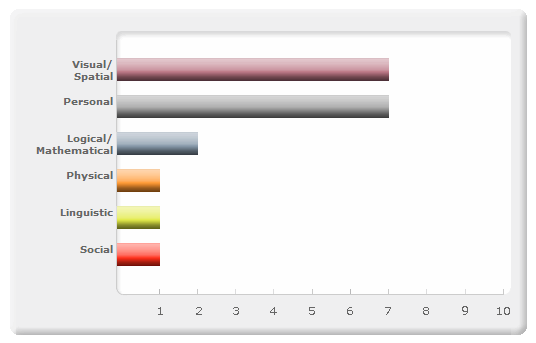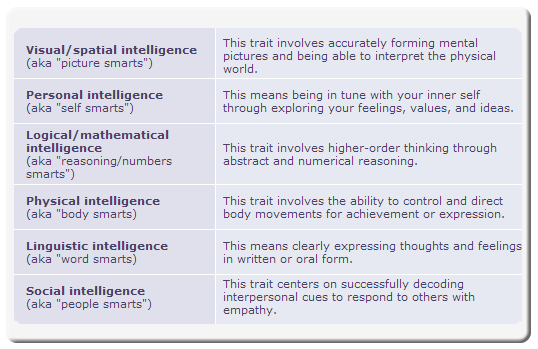Tests Results
- Your Sexual Persona
- Your Personality Type
- Your 5 Factor Personality Report
- The Brain Test
- Emodes Original Inkblot Test
- Comprehensive IQ Report
- Career Interest
- Your Chakra Reading
- Your Emocional IQ Report
- What's Behind Your Emotions?
- Your Enneagram Report
- Your Motivation Report
- Your Picture Personality Report
- Your Plan for Happiness Report
- Your Destity Reading
- The Best Qualites Report
- Your Career Interest Report
- Your Freudian Analisis Report
- Your 7 Secrets of Success Report
- Your Career Personality Type Report
- Your Corporate Culture Report
- Fear Report
- Your Multiple Intelligences Report
- Your Picture Personlity Report
- Your Power Quotient Report
- Your Social Networking Report
- Your Subconscious Mind Analysis
- Your Super IQ Report
- Your True Talent Report
- Your Right Job Report
Who excuse his actions by destiny and indulge yourself, this deserves to make mistakes.
Cum sociis natoque
— Seneca the Younger,
Lucius Annaeus Seneca, called Philosopher,
(4 BC - 65 AD)
Motto
Almost anyone fate did not bestow great and continual success. Only the happiness that comes easily, is persistent and accompanied us to the end. Seneca the Younger (born Lucius Annaeus Seneca, called. Philosopher, 4 BC - 65 AD)
Your Multiple Intelligences Report
Rafal, you have your own distinct brand of smart. As a result, you're likely more geared toward some types of intelligence than others. The important thing to remember is that the scores you receive below are an indication of where you stand today. Everyone possesses the capacity to improve and change. To help you do just that, Tickle's experts have provided a series of action steps in each section below to help you fulfill your potential. But first, let's examine what you're best at.
Your greatest strength is Visual/Spatial Intelligence. You scored a 7 out of 10. This means that you scored above 70% of the others who took this test.
What is visual/spatial intelligence?
People with visual/spatial intelligence have the interesting ability of being able to form high-quality mental images and even manipulate those pictures to form new things. Visual/spatial abilities can include being able to visualize accurate representations of existing objects and having the skill to imagine detailed original designs or scenes. In the career world, this can make visual/spatial types great at everything from mechanical engineering to interior design.
People with this intelligence typically have a high level of attention to detail and are well in touch with their surroundings. As a result, visually/spatially intelligent people can make great hunters because they tend to notice even small changes in their physical environment — a key when tracking prey. They're also the kinds of individuals you'd want in control of the map on a road trip. Visual/spatial intelligence can make people great with directions.
In addition, people with strong visual/spatial intelligence typically love aesthetics. They can usually find beauty in both manmade and natural things. Appreciating a sunset, noticing how patterns and colors fit together to make a great outfit, and having at least a passing knowledge of architecture and design are all different ways that their love of beauty can manifest.
People who use this type of intelligence tend to think in pictures rather than numbers or words. As a result, those who score relatively high on visual/spatial intelligence are better at learning concepts when seeing charts, pictures, or diagrams rather than hearing a lecture. Overall, using this type of intelligence can enrich your life because it requires a vivid imagination. Indeed, by forming creative mental images and really seeing the things around you, you can make the world a more wondrous place.


Most everyone has at least some degree of each of these six types of intelligence. Yet it's also true that almost no one uses any one kind of intelligence to its fullest potential. Most of us take advantage of certain aspects of an intelligence we have but don't explore its other benefits. As you read the sections below, notice the ways you're actively using your intelligences today and the ways you can expand them in the future. The Take Action sections will help you get started.
Before looking at the details of your remaining intelligences, you might want to know how we generated this summary of your skills.
While you were answering the test questions, we measured your intelligence level in six distinct areas: linguistic, logical/mathematical, personal, physical, social, and visual/spatial.
As you look at your multiple intelligences profile, you may notice that you can receive the same score on more than one of your intelligences. Don't worry, that's very common. If some of the intelligences share the same score, it simply means that you're equally good at all of those skills.
Here's how your intelligences profile is ranked. First, we calculated your overall score for each intelligence. The higher the score, the higher it is ranked in your intelligences profile. If you receive the same score on more than one type of intelligence, our researchers then looked at how difficult it is for people to get high scores on those different areas. They then ranked those competing intelligences in order of difficulty.